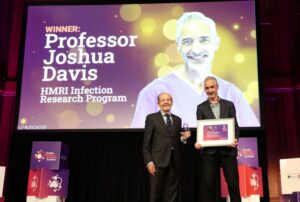
CHAPEL HILL, N.C., Oct. 20, 2025 – A groundbreaking study published in the Journal of the American Medical Association (JAMA) has revealed that a direct-to-patient digital health initiative can significantly enhance lung cancer screening rates among high-risk individuals. The research was co-led by experts from the UNC Lineberger Comprehensive Cancer Center and Wake Forest University School of Medicine.
Lung cancer remains the leading cause of cancer-related deaths in the United States. Despite the potential of early detection through screening to reduce mortality, only about 20% of eligible individuals currently undergo recommended screenings, as reported by the National Cancer Institute. The study aimed to address this gap by leveraging digital technology to reach potential candidates for screening.
Addressing Barriers to Screening
The challenges in identifying patients eligible for lung cancer screening are multifaceted. They include the need to assess lifetime smoking exposure and limited awareness of screening guidelines among both patients and healthcare providers. Additionally, the time constraints during regular primary care visits often hinder the necessary counseling and shared decision-making processes.
“We wanted to see if we could overcome these barriers by reaching out to potentially eligible patients with an interactive digital program outside the usual outpatient visits,” explained Dr. Daniel S. Reuland, professor of medicine at the UNC School of Medicine and the study’s UNC site lead. “The goal was to help patients find out if they were eligible for screening and make an informed decision about screening. We also wanted to give eligible patients a way to connect with the specialized lung cancer screening program within the health system.”
Study Design and Key Findings
The randomized clinical trial involved 1,333 individuals with a history of smoking, all of whom were eligible for screening. Participants in the intervention group were assigned to the mPATH-Lung online program, which featured a brief educational video, a decision aid, and an option to request an appointment with a screening program. Meanwhile, the control group received a recommendation to discuss screening with their primary care clinician.
At 16 weeks, 25% of participants using mPATH-Lung completed a screening CT scan, compared to 17% in the control group.
Screening rates improved across all demographic and socioeconomic groups.
No complications were reported from screening-related procedures.
“This study shows that this kind of digital outreach using the EHR portal or text messaging is a scalable way to make an impact on screening that can complement the care provided in regular face-to-face primary care visits,” said Dr. Alison Brenner, associate professor of general medicine and clinical epidemiology at the UNC School of Medicine and co-author of the study. “We saw improvements across the board, including among populations that have historically faced disparities in access to screening.”
Implications and Future Directions
The findings of this study suggest a promising avenue for enhancing lung cancer screening rates through digital health interventions. By addressing existing barriers and reaching patients outside traditional healthcare settings, such programs can play a crucial role in early cancer detection and ultimately reduce mortality rates.
“We’re proud to be part of a team that’s translating research into real-world solutions for patients across North Carolina and beyond,” added Dr. Reuland. The success of the mPATH-Lung program could serve as a model for similar initiatives targeting other preventable diseases, potentially transforming preventive healthcare practices nationwide.
As the healthcare industry continues to embrace digital solutions, the integration of such programs into routine care could become a standard practice. Future research may focus on refining these digital tools and exploring their efficacy in diverse healthcare environments, ensuring that all patients have access to life-saving screenings.





